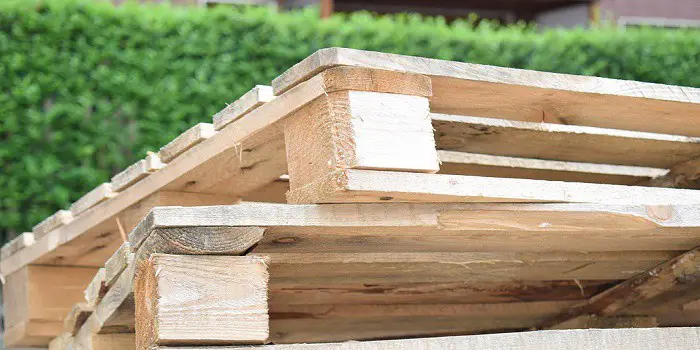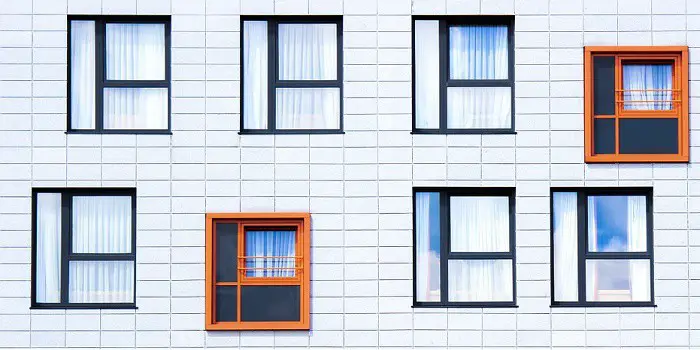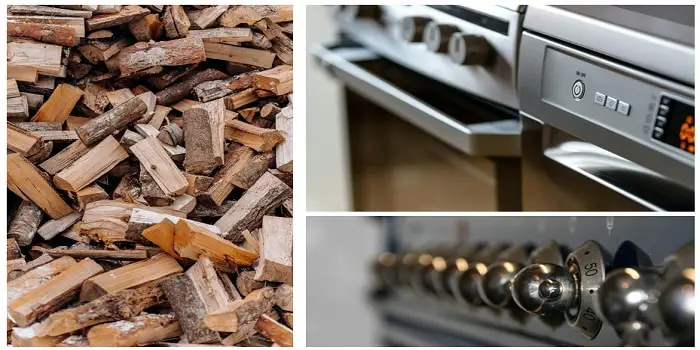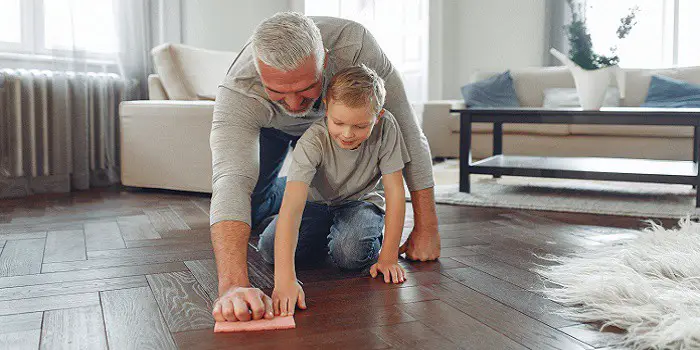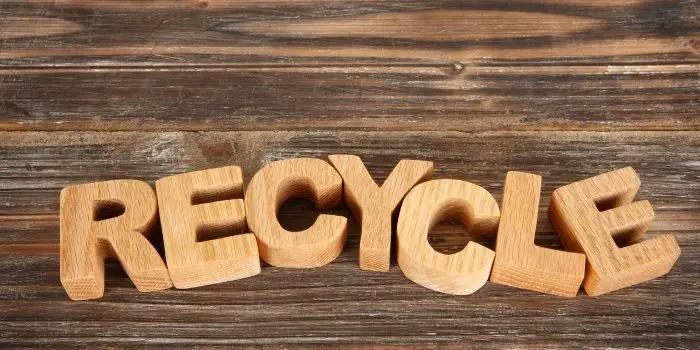
Since paper and wood both come from trees and paper is recyclable, one might think that wood is also recyclable.
Perhaps surprisingly, wood is unable to be recycled. Recycling centers are simply not equipped at this point in time to handle wood.
Also, much of the wood used today is usually treated, making it difficult for recycling centers to process. For this reason, it isn’t recommended to put any wood waste or lumber in the trash or recycle bin.
That said, you can reuse this traditional, sustainable material to turn it into new DIY wooden products such as toys or home decor items.
Recycling and using waste wood is also now made possible in industries for making recycled plywood flooring, garden decking ships, and vehicles.
Not only does it saves money, but it also benefits the environment by saving trees.
What Bin Can I Put Wood In?
If you need to, always put the small wood scraps (like twigs) in the green-lidded bin along with your other waste garden materials.
Felled wooden branches and other waste materials in your garden should not go into the yellow-lidded recycle bin as they cause contamination.
If you don’t have green lidded food and garden organics (FOGO) bin available, you can then place them in your home compost bin.
Types of Wood You Should Not Put in the Garbage
Besides the fact that recycling facilities cannot recycle wood, treated wood can also be hazardous.
When used for its many purposes, wood is treated to take on a certain appearance.
This lessens its ability to decompose naturally and, after it has served its purpose, makes it difficult to dispose of due to the chemicals it contains.
With that in mind, the following types of wood are unable to be recycled:
a) Treated wood
Treated wood contains chemicals that cannot be dumped freely or used to make new products.
The chemicals found in the wood can leak into the surrounding areas and cause health issues.
b) Wood with nails
Many people assume that because wood is a natural material, it’s safe to recycle or dispose of without additional thought.
This isn’t always true, especially if you are dealing with wood that has nails, like old pallets or furniture.
To get rid of it, you’ll need to get familiar with a few critical points for wood disposal with nails, which I will cover later in this article.
c) Painted and lacquered wood
Painted wood contains harmful chemicals, just like treated wood. Beyond being dangerous, painted wood may also impact the adhesion ability of the wood.
Also, the plywood and MDF cabinets treated on the outside with lacquer may make it challenging to stick to other pieces of wood. It is not recommended for recycling.
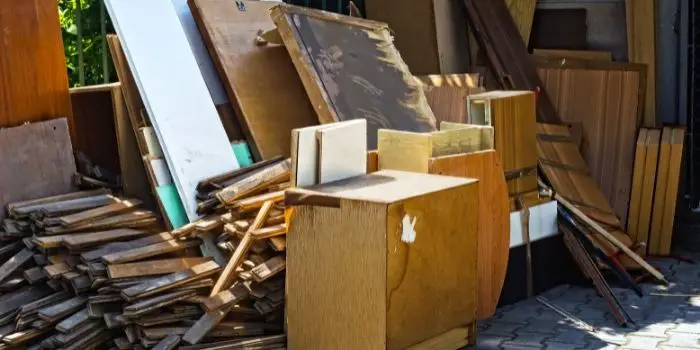
What are the Different Ways to Dispose of Old Wood?
Wood is one of the most common materials for furniture and construction.
Treated wood, such as utility poles and railroad ties, are suited for repurposing, as they can be used to make items like barriers, bridges, and fences.
Though wood can be used in projects to control erosion, it does run the risk of contamination by water.
Since you can’t toss wood into a recycling bin, you can dispose of it in other creative ways, including:
1- Home Decor
You can use your leftover treated wood to create decor or furnishings for your home.
Using pieces of old wood, you can make a bookcase to store or display books and trinkets with the ability to add as many compartments as necessary.
You can also turn old wood into a unique table, such as a side table, dining table, or coffee table.
Using a saw and patience, you can create decorative wall art out of wood.
Cutting it into different shapes, creating words, staining it, and many other options are common creative ways to use wood.
Essentially, any wood furnishings, art, or other items you have around the home that are unable to be recycled could be used to create just about anything you can imagine.
2- Compost
If you have untreated wood you don’t know what to do with, you could always use it to compost.
Because it is rich in carbon, it makes a great addition to any composting material rich in nitrogen.
Wood can work as a filler that will help by absorbing moisture from the water in the composting material, improving the process.
It is essential that you do not use treated wood for this purpose since it can negatively impact the health of your plants.
It can also be detrimental to the other materials you use for composting.
This old wood can even be used to make the compost box itself. This will not only reduce landfill waste but ultimately foster the growth of new things.
3- Mulch
One of the best ways to get rid of your old wood is to use it to make mulch that can then be used in your garden.
Mulch can quickly improve the health of the plants in your garden, among other benefits:
- Mulch can improve soil quality by breaking up lumps of clay to make it easier for air and water to move through the soil.
- Mulch reduces the growth of weeds when used in a thick layer on top of the ground. The weeds that make it through the mulch are much easier to pull.
- Mulch helps plants remain stable during long periods of drought, as it can prevent the water from evaporating out of the soil.
- In the summer, mulch works as extra insulation for the ground’s top, helping keep it cool.
4- Firepit
If you are allowed to have a fire pit on your property, this is an excellent way to get rid of your wood.
Instead of going out and buying expensive wood to burn, you can instead cut up what you already have and burn it.
It is recommended that you use only natural wood that has not been treated in any way, including painting or staining, in your fire pit.
This will prevent burning harmful chemicals that might otherwise be released into the air around you.
5- Sell it
Wood is among the most common building materials. Because of this, it is forever in demand.
Instead of tossing unused wood, you can sell it to those who need it.
When you sell wood, you don’t usually have to worry about if it is treated or not like you do the other methods.
So long as it’s what the customer wants, it doesn’t matter. Selling wood tends to yield a good amount of cash as well.
If you aren’t successful in selling it, you could check with friends and neighbors who may be able to use it in some way.
6- Submit it to a facility
If you still can’t do anything with your treated wood, you can always take it to a hazardous facility.
This kind of facility is prepared to take things like treated wood and handle the chemicals.
Though sometimes you may have to pay a small fee to drop it off, sometimes it is entirely free.
Get in touch with your local hazardous waste facility to see what the process involves and what price you may have to pay.
7- Give it to a biomass energy producer
A final option to dump the old waste wood is to give it to a biomass energy company.
The company may be able to use this material to create steam, electricity, or another power source using the wood you provide.
Burning wood is a much cleaner alternative than most fossil fuels, making this a relatively eco-friendly option.
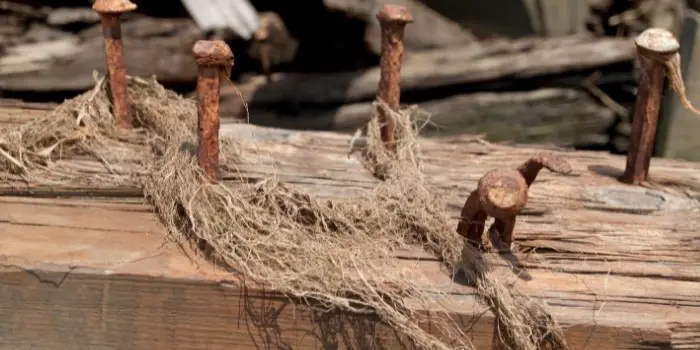
What to Do with the Old Lumber That Has Nails?
As we mentioned, timber with old nails isn’t safe to dump in a bin. There are, however, a few other alternatives you can try.
To start with, you should determine whether your wood with nails falls in the commercial or residential category.
Residential wood debris is safe to just place by the road for pickup with the rest of the garbage, but you can’t do that with commercial wood.
Wood discarded at a job site by professional contractors, carpenters, or other such services will not be collected.
1. Put Wood Out with Your Trash Only If Your Garbage Collector Accepts It
Before you place wood with nails in with the rest of your garbage, check to ensure the garbage collector will take it.
Remember that waste disposal will only pick up your waste lumber and other wood debris from a residential DIY project if the pieces are without nails and are half an inch or larger in diameter.
So, before you place wood by the curb, make sure you follow these steps:
- Collect the wood pieces and clean them off.
- Look for nails that remain in the wood. You’ll want to take the nails out so there is no risk of injury when someone collects and manages the wood.
- Use the back side of a hammer to remove the nails slowly. It is a good idea to wear protective gloves to protect your hands during the process.
- After removing all the nails from the wood, give it another once over to ensure no nails are left behind. Even one nail can cause damage or hurt people collecting the trash, so this is very important.
- Tie the wood pieces into little bales no higher than two feet or longer than four feet. You can tie it all together using strong twine or a thick rope. Do your best to avoid using synthetic binding materials like nylon ties or tape.
- Once the nails are removed and the wood prepared, you can place it at the curb. Be sure you put the wood somewhere that is visible to ensure no one trips on it and becomes injured. It’s best to do this sometime between 4 PM and midnight the day before the trash collection occurs.
- Please note that wood debris larger than four feet in length or two feet in height aren’t able to be thrown out with your regular garbage. You’ll need to make a special pickup appointment for wood like this.
2. Burn the Wood to Get Some Beneficial Ash
Instead of going through the above process, you could just burn the wood scraps.
The wood will simply turn into ash, at which point you can take a strong magnet to the pile to pull all of the metal nails from the ashes.
Even so, keep in mind that burning wood will generate a lot of smoke and fumes, so you should burn it outdoors in an ample open space.
It is also recommended that you put on a mask to ensure you don’t breathe in the fumes and wear heat-resistant gloves, so you don’t burn your hands.
There are certain kinds of wood you shouldn’t burn; some woods will release toxic gases as they burn.
This includes stained wood or any wood that has been previously treated with a substance to prevent wood rot.
3. Disposal of Home Repair or Commercial Wood Debris
In terms of commercial wood debris, you’ll have to have it handled by commercial waste facilities.
When you hire someone to do woodworking, it should be their responsibility to remove the lumber, wood debris, and other waste materials after the job is done.
Still, the wood won’t be considered commercial if you do the job without any hired workers.
In cases like this, you can put the waste materials out with your usual garbage to allow it to be collected. You can also make an appointment for the pickup of larger items.
FAQs
Is recycled timber good to buy?
Recycled timber can be a good choice for furniture, flooring, and other wood products.
It is generally cheaper than new wood and can be just as solid and durable.
Recycled timber often has a more exciting grain pattern than new wood, making it more unique.
It is also more environmentally friendly since it doesn’t require new trees to be cut down.
What to do with my old Christmas tree?
Recycling your Christmas tree is a great way to give it a second life and help the environment.
Here are some ideas for what you can do with your old tree:
- Turn it into mulch or compost
- Use it as firewood
- Donate it to a wildlife center or nature preserve
What is the difference between recycled timber and reclaimed timber?
Recycled timber is wood that has been used before and then recycled. In contrast, reclaimed timber has been taken from old buildings or other structures and used again.
Recycled timber is generally cheaper than reclaimed timber, but it may not be as strong or durable.
Reclaimed timber often has a more attractive grain pattern and may be more environmentally friendly since it doesn’t require new trees to be cut down.
Final Thoughts
Even though it is the source for making paper, which is recyclable, in most cases, it is impossible to recycle wood.
Besides most recycling facilities lacking the technology to process wood, treated wood or painted wood also has chemicals that can damage anything else it is recycled with.
Unfortunately, getting rid of extra wood can seem difficult for those stuck with it. Even though it isn’t recommended or safe to try and recycle wood with other items, you are not stuck with unwanted wood forever.
You can dispose of it in many ways, from repurposing it for furniture, selling it off, using it in your fire pit, or giving it to a facility that specializes in handling treated wood.
Share the post "Can You Put Wood in the Recycle Bin – Where to Dump Instead?"

Hi, I am Mark Garner a professional carpenter, woodworker, and DIY painter. I live in the small city of Peoria, Arizona as a semi-retired woodworker. I have started this blog with a simple motive to help you with my wood experience in this sector. If you like to know more about what I love doing and how it all got started, you can check more about me here.

